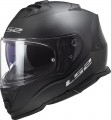The sizes in which this helmet model is produced.
The appropriate helmet size depends primarily on the circumference of the wearer's head. The circumference is measured at the widest point of the head — usually at a level of 1 – 2 cm above the eyebrows and along the protrusion at the back of the head; more detailed recommendations and descriptions can be found in special sources. Here we note that although manufacturers use the same size designations —
XXS,
XS,
S,
M,
L,
XL, etc. — specific sizes for different brands may vary slightly; for example, XL can fit both 60 – 61 cm and 61 – 62 cm. This seemingly small difference can significantly affect the comfort and safety of use. Therefore, when choosing, you need to be guided by the size tables of a particular manufacturer.
It is also worth considering that helmets with the same size designation may differ not only in actual size, but also in the shape of the internal space. Therefore, even compliance with the size table is not a guarantee that the product will be suitable; the most reliable way is to test the helmet "live" before buying.
—
Quick release visor. The ability to quickly remove the helmet visor, in most cases without the use of special tools. Such an opportunity can be useful, for example, for cleaning from pollution, replacing transparent glass with tinted glass, or vice versa.
—
Anti-fog coating. The presence on the helmet visor of a special coating that prevents fogging from the breath of a motorcyclist. This feature will be useful especially in cold weather (glasses practically do not sweat at high air temperatures). It is especially important for closed helmets (integral and enduro, see "Type"), but can also be found in open ones. Note that such a coating is not a 100% guarantee against fogging, but the likelihood of this phenomenon is greatly reduced.
—
Sun visor. A sunscreen in the form of additional tinted glasses that can be lowered and raised as needed, usually by means of a small lever or button on the side of the helmet. Do not confuse this device with tinted glass (see "Visor" above): a sun visor is provided as an addition to the main visor and covers only the eyes. By lowering and raising such glasses, you can “turn on” and “turn off” additional dimming. At the same time, the main visor is most often made transparent, thanks to which the helmet can be comfortably used at night — just lift the built-in glasses and look through the transparent glass. However,
...the sun visor can also be combined with tinted glass; this option will be appreciated by people with sensitive eyes that do not tolerate sunlight well and require enhanced darkening. The disadvantage of this feature is a noticeable increase in the cost of the helmet.
— UV protection. Availability of UV protection in the glass and/or helmet sun visor (see above). Intense ultraviolet light is harmful to the eyes, it leads to their rapid fatigue, deterioration of vision, and sometimes even eye diseases. Moreover, such radiation can be quite intense not only in sunny, but even in cloudy weather; in addition, the amount of ultraviolet increases in mountainous areas as altitude increases. However with short-term exposure, the described effects are hardly noticeable, but even for trips over short distances, UV protection will be useful. And if you are going to travel "far and long" — this feature is highly desirable. Note that if necessary, UV protection can be provided using separate glasses (motorcycle or conventional), but not all helmets allow the use of such glasses.
— Built-in ventilation. The ventilation system usually has the form of holes in the shell — the air flow entering them "blows" the inside of the helmet. This not only provides comfort (especially in hot weather), but also reduces the amount of moisture accumulating inside: the rider's head sweats less than in a fully closed helmet, and the sweat that is released quickly evaporates and is blown into the ventilation. At the same time, many models provide the ability to completely or partially block the ventilation — for example, in cold or rainy weather.
— Breath cutter. Most often found in helmets of a closed design (integrals, modulars, enduro — see "Type"). In such models, it is a kind of visor that covers the nose and mouth of the motorcyclist — so that the exhaled air is discharged into the lower part of the helmet and the visor does not fog up. Also, sometimes cut-offs are called additional masks that are equipped with open helmets, but this is not entirely true — such masks have a slightly different purpose, they are mainly designed to protect the mouth and nose from dust, small litter, insects, etc.
